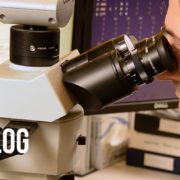Weathering the Storm: The parallels of Winter and Fluid Analysis

This weekend I’m headed to Tampa Bay, Florida to join our vice president of sales for a presentation to one of our top customers. Naturally, after the cold and snow that gripped most of the country over the past six weeks, I’m looking forward to going someplace warm. Yet, I have to admit winter could have been worse. The weather models provided accurate, reliable and timely predictions, which helped many of us avoid the challenges of delayed shipments, flight delays, stalled traffic and increased probability of car problems.
I’ve been able to draw a timely and compelling parallel between the weather models and the benefits of equipment condition monitoring, when done properly. With the right fluid analysis partner, you also can capture accurate and actionable management information about your equipment, fleet and more.
With more information about what’s going on inside your equipment, you can take your fluid analysis program to the next level and make more informed maintenance decisions. When equipment wear shows up on your radar, you can improve production through fewer unscheduled breakdowns. Finally, when your company takes action on the information you’ve received, you can save time and money by avoiding hidden costs. Our customers have come to recognize the proven impact, proven uptime and proven savings that come from partnering with POLARIS Laboratories®.
Finally, thinking about my trip to a much-appreciated warmer climate reminds me of one reliable success story where a Florida company reaped the benefits from proven impact, proven uptime and proven savings. Can you afford not to know the forecast of your equipment?

Proven Impact. Proven Uptime. Proven Savings.
Let us prove it to you.





